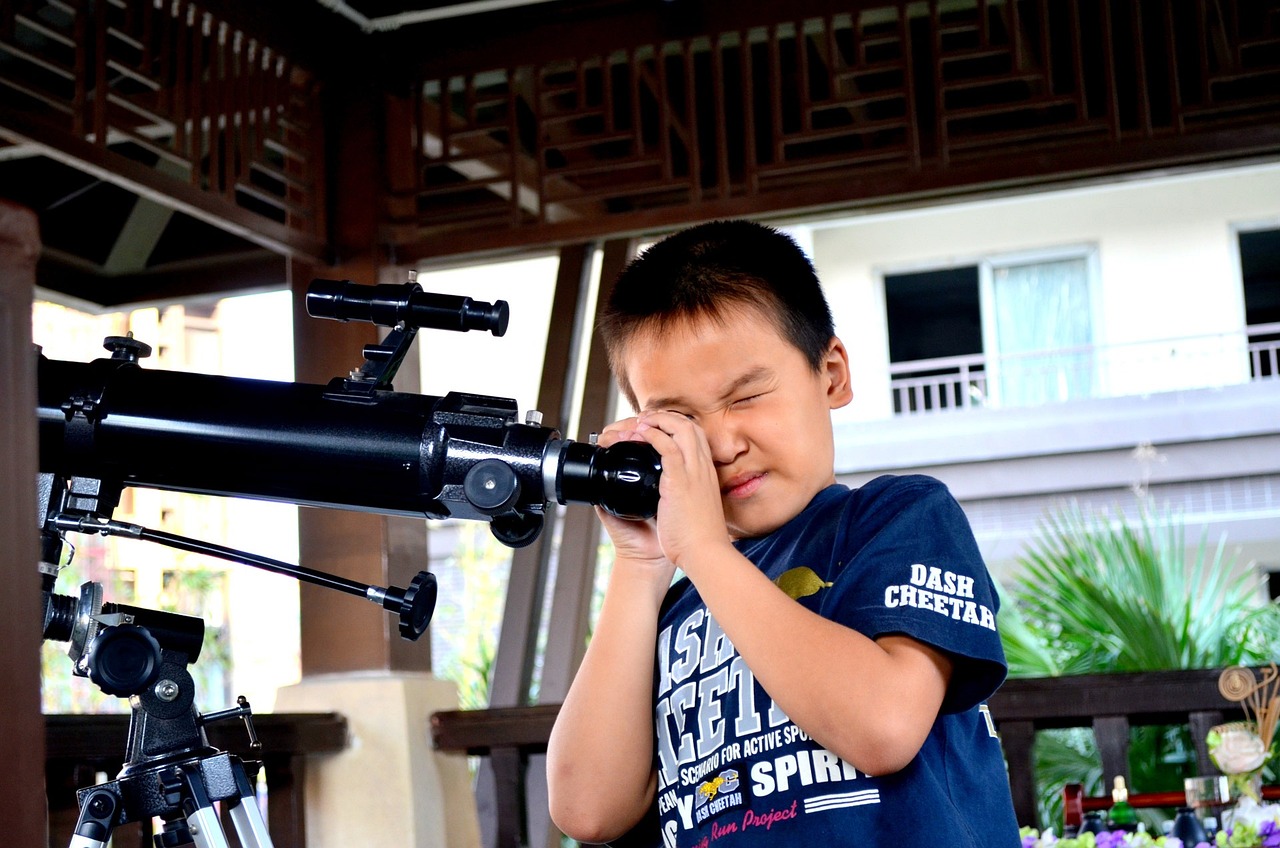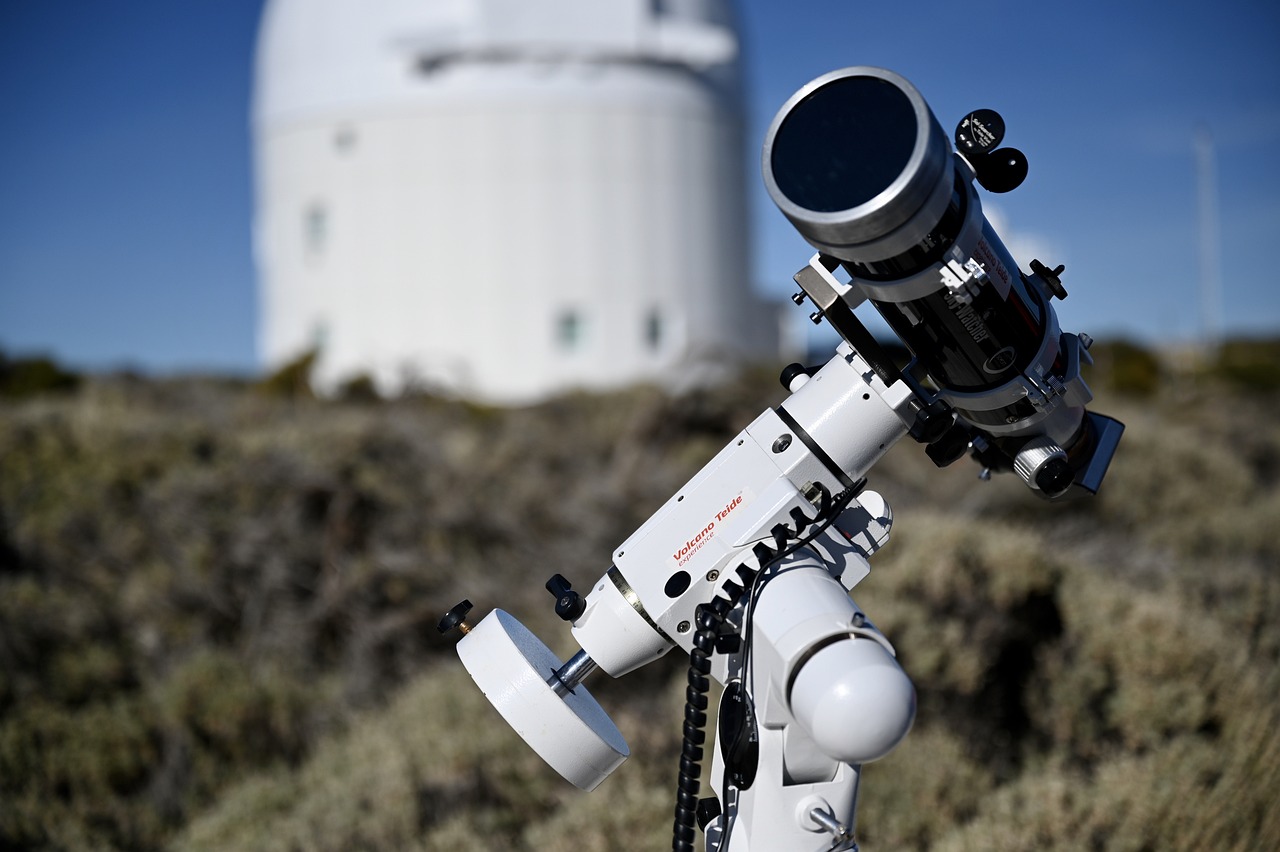Stardust and eternity – 3.5.1
Amateur observation
There are three basic tools that an amateur astronomer can use to observe the night sky: the eye, binoculars, and telescopes – each of which suits specific purposes.
The “human eye” is ideal for the observation of astronomical objects such as star constellations, meteors, the Milky Way in its entirety, planetary conjunction (two or more planets approaching each other in the sky), or the conjunction of a planet and the Moon. The most important step when observing with the naked eye is to shield our sight from disturbing lights, e.g. by moving away from cities, and letting our eyes “adapt” to darkness, waiting a few minutes to spot the faintest stars.
Binoculars are instead more suitable for observing comets, bright variable stars, or looking through the Milky Way to spot bright galactic nebulae and star clusters. Nearby galaxies, such as Andromeda (M31) and the Magellanic Cloud, are better visible with binoculars. The 7×50 is probably the best size for most astronomical purposes. Some high-end Canon and Nikon binoculars feature image stabilisation, a high-tech function that makes the image much more stable.
However, a “telescope” is necessary if we want to closely observe the planets of our solar system, the craters of the Moon, Saturn’s rings, Jupiter’s Great Red Spot, planetary nebulae or to distinguish the members of close double stars, to name but a few uses. Telescopes fall into three main categories: refractors, which use lenses to collect and focus light; reflectors, which use mirrors to collect and focus light; and more expensive telescopes, such as Schmidt-Cassegrains, which use both mirrors and lenses. Commonly, a good refractor offers a better view than a good reflector that has the same aperture, i.e. the diameter of the main lens or mirror. A good refractor is, however, more expensive than a similar reflector. For many amateur astronomers, Schmidt-Cassegrains telescopes are the preferred models and Celestron, Meade, and Orion the preferred brands.
Every telescope used for amateur purposes is equipped with an eyepiece – a special lens that magnifies the focused image for viewing. When taking photographs, one usually removes the eyepiece and mounts the camera on the telescope. For a small telescope, observation is usually best with eyepieces that provide magnifications of 25x or 50x (i.e. 25 or 50 times larger than what we would see with the naked eye). Telescopes are generally mounted on a stand, tripod, or a pier with an “alt-azimuth” or an “equatorial” mount. An alt-azimuth mount, a two-axis mount for supporting and rotating the telescope on two perpendicular axes – one vertical and the other horizontal – is usually steadier to use for a beginner; an equatorial mount – a mount that compensates for the Earth’s rotation by having one axis of rotation, the polar axis, parallel to the Earth’s axis of rotation – is better for tracking stars as they rise and set. If a telescope has built-in computer control, any style of mount is fine because the computer takes care of the tracking.


Further resources
Links below will redirect you to external websites. In accordance with the European data protection declarations, we would like to point out that by clicking on these links you may send data to external providers. We cannot prevent that.
Images
Videos
![]() Naked Eye Observations: Crash Course Astronomy
Naked Eye Observations: Crash Course Astronomy
![]() Telescopes: Crash Course Astronomy
Telescopes: Crash Course Astronomy
On line resources
![]() Stargazing (Peter Grego)
Stargazing (Peter Grego)
![]() Getting started in astronomy (Royal Astronomical Society)
Getting started in astronomy (Royal Astronomical Society)
![]() How to choose a binocular for astronomy
How to choose a binocular for astronomy
![]() Viewing the Constellations with Binoculars (Bojan Kambic)
Viewing the Constellations with Binoculars (Bojan Kambic)
Further readings
![]() Astrophysics is Easy! An Introduction for the Amateur Astronomer (Mike Inglis)
Astrophysics is Easy! An Introduction for the Amateur Astronomer (Mike Inglis)
![]() Astronomy with a Budget Telescope: An Introduction to Practical Observing (Patrick Moore, John Watson)
Astronomy with a Budget Telescope: An Introduction to Practical Observing (Patrick Moore, John Watson)
![]() The Science and Art of Using Telescopes (Philip Pugh)
The Science and Art of Using Telescopes (Philip Pugh)
![]() How to Photograph the Moon and Planets with Your Digital Camera (Tony Buick, Philip Pugh)
How to Photograph the Moon and Planets with Your Digital Camera (Tony Buick, Philip Pugh)
![]() The Moon in Close-up: A Next Generation Astronomer’s Guide (John Wilkinson)
The Moon in Close-up: A Next Generation Astronomer’s Guide (John Wilkinson)
![]() From Casual Stargazer to Amateur Astronomer How to Advance to the Next Level (Dave Eagle)
From Casual Stargazer to Amateur Astronomer How to Advance to the Next Level (Dave Eagle)
Teaching Material
![]() Observing resources for amateur astronomers
Observing resources for amateur astronomers
![]() Resources for teaching astronomy
Resources for teaching astronomy
For Kids
![]() Seeing Stars: Crash Course Kids
Seeing Stars: Crash Course Kids
